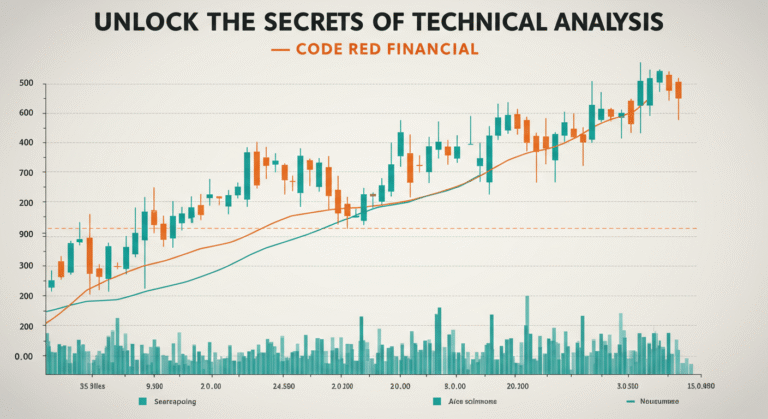
Renting a Home: Financial Implications
Renting a home involves a series of financial implications that prospective tenants must carefully consider. Initially, renters are required to pay a security deposit and the first month’s rent upfront. According to the National Multifamily Housing Council, the average security deposit for a rental property in the U.S. is one month’s rent, though it can vary based on location, landlord policies, and creditworthiness. These costs, while significant, are generally lower than the down payment and closing costs associated with purchasing a home. For instance, the average down payment for first-time homebuyers in the U.S. is approximately 6% of the home’s purchase price, which on a median-priced home of $417,000 (according to Zillow) would amount to $25,000—substantially higher than the initial costs of renting. This lower initial financial barrier is one of the primary benefits of renting, making it an accessible option for many individuals.
Ongoing monthly rental payments are a key financial aspect of renting. According to the U.S. Census Bureau, the median monthly rent in the United States is about $1,100 as of 2023, though this varies greatly by location, with cities like San Francisco and New York having average rents exceeding $3,000 per month. These fixed payments can simplify budgeting for tenants, providing a predictable monthly expense. However, unlike mortgage payments, rent does not contribute to building equity in a property. This means that renters do not gain ownership over time, and their payments effectively go toward the landlord’s income rather than an investment in their own asset.
One of the major advantages of renting is the flexibility it offers. Renters typically commit to shorter leases, often ranging from six months to a year. According to Apartment Guide, about 35% of renters in the U.S. signed leases for 12 months or less in 2023, allowing for greater mobility. This short-term commitment allows for greater mobility, making it easier for individuals to relocate for job opportunities or personal reasons without the burden of selling a home. This flexibility is particularly beneficial in today’s dynamic job market, where remote work and career changes are increasingly common.
Another financial consideration is the cost of maintenance and repairs. In most rental agreements, these responsibilities fall on the landlord, potentially leading to significant cost savings for renters. The average cost of home maintenance for homeowners is about 1% of the home’s value annually, which could mean an expenditure of over $4,000 per year for the owner of a $400,000 home. This arrangement can alleviate the financial stress associated with unexpected home repairs, a common concern for homeowners.
Renters are also insulated from property market fluctuations. While homeowners may face changes in property values, renters do not bear this risk. However, renters are not entirely immune to market conditions, as they may experience rent increases over time. According to the National Apartment Association, rent prices increased by an average of 3.4% in the U.S. in 2023, reflecting broader inflationary pressures and housing demand. Landlords may raise rent to reflect market rates, which can impact a renter’s long-term financial planning.
Overall, renting offers several financial benefits, including lower upfront costs, flexibility, and reduced responsibility for maintenance. However, the inability to build equity and potential rent increases are important factors to consider when evaluating the financial implications of renting a home.
Financial Implications of Buying a Home
Purchasing a home involves significant financial commitments right from the start. The initial costs include a down payment, which typically ranges from 3% to 20% of the home’s purchase price, depending on the type of mortgage and the lender’s requirements. For a $400,000 home, this could amount to anywhere from $12,000 to $80,000. Additionally, closing costs, which encompass fees for appraisals, title insurance, and loan origination, generally total about 2% to 5% of the purchase price. This would add another $8,000 to $20,000 for a home priced at $400,000. Mortgage fees, including interest rates, play a crucial role in determining the monthly payment amounts over the life of the loan.
Mortgage rates are a pivotal factor when buying a home. According to Freddie Mac, the average 30-year fixed mortgage rate as of 2025 is 6.5%. Even a slight variation in the interest rate can significantly impact the total repayment amount. For instance, a $400,000 mortgage at 6.5% interest would result in monthly payments of around $2,500 (excluding taxes and insurance). However, if the interest rate were just 1% lower, at 5.5%, the monthly payment would drop to approximately $2,270. Over the life of a 30-year mortgage, this difference in interest rates could lead to tens of thousands of dollars in savings.
Over time, homeowners build equity in their property as they pay down the mortgage principal. In 2025, the median home price in the U.S. is approximately $417,000. As homeowners pay down their mortgage, they increase their equity in the property, which serves as a substantial financial asset and can provide borrowing power for future investments or expenses. Historically, real estate has appreciated over the long term, with the average annual rate of home price appreciation in the U.S. being around 3% over the last 50 years. This provides homeowners the opportunity to gain a return on their investment as property values increase over time.
Additionally, tax benefits, such as mortgage interest deductions, can reduce taxable income, providing further financial relief. Homeowners can deduct mortgage interest on loans up to $750,000 (for primary and secondary homes) under the Tax Cuts and Jobs Act of 2017.
Owning a home can also contribute to long-term financial stability. Homeowners are not subject to rental increases and can potentially generate rental income if they decide to lease out part or all of their property. According to Rentometer, homeowners can earn an average of $1,200 to $2,500 per month by renting out a room or accessory dwelling unit, depending on location.
However, it is crucial to consider the ongoing costs of homeownership, which include maintenance, repairs, insurance, and property taxes. According to the U.S. Census Bureau, property taxes in the U.S. average around 1.1% of a home’s value annually. For a $400,000 home, this could amount to approximately $4,400 per year. These expenses are the homeowner’s responsibility and can add up over time.
Finally, there are risks associated with homeownership. Property market downturns can reduce home values, potentially leading to negative equity situations, where homeowners owe more than the property is worth. In 2008, the U.S. housing market crash resulted in homes losing up to 30% of their value in some areas, demonstrating the risks of property market fluctuations. Selling a home in a slow market can also be challenging, potentially resulting in financial losses. Therefore, while buying a home offers numerous financial benefits, it also requires careful consideration of the associated risks and responsibilities.
Debt Considerations in Renting vs. Buying
When evaluating the debt implications of renting versus buying a home, it is crucial to consider the distinct financial commitments each option entails. Renting a home typically involves monthly rental payments without the burden of long-term debt obligations. This characteristic of renting allows individuals to maintain a more flexible financial situation, as they are not tied to large loans or mortgages. Moreover, renting does not significantly impact an individual’s credit score, except in cases where rental payments are reported to credit bureaus. According to FICO, a mortgage can add 15-30 points to a homeowner’s credit score after timely payments, whereas rental payments generally do not influence the credit score unless the tenant defaults or the landlord reports payments.
Conversely, buying a home necessitates taking on a mortgage, which constitutes a significant debt that affects a homeowner’s financial health and credit score. According to TransUnion, the average U.S. mortgage debt is $220,000, which can be a significant financial strain for many buyers, especially when factoring in interest payments and other homeownership costs. The process of securing a mortgage involves a thorough assessment of an individual’s creditworthiness, and the subsequent mortgage repayments become a long-term financial responsibility. The impact of interest rates on these repayments can profoundly influence the overall cost of homeownership, with higher interest rates leading to larger financial outlays over the life of the loan.
Homeowners, however, have the potential advantage of leveraging home equity loans or lines of credit, which can provide additional financial flexibility. These options allow homeowners to borrow against the equity of their property, which can be beneficial for funding significant expenses or consolidating other debts. Nevertheless, the psychological and financial stress associated with large debt commitments, such as mortgages, cannot be overlooked. Effective financial planning is essential for managing mortgage payments and ensuring long-term financial stability.
In certain scenarios, renting may be a more financially prudent choice than buying. This is particularly true in markets with high property prices or for individuals with unstable income. Renting can offer a level of financial predictability and lower risk, making it a viable option for those who prefer to avoid the uncertainties and obligations of homeownership. Ultimately, the decision between renting and buying should be carefully considered, taking into account the individual’s financial situation, market conditions, and long-term goals.







